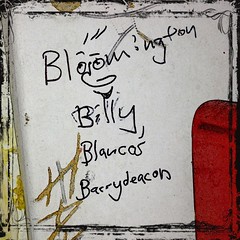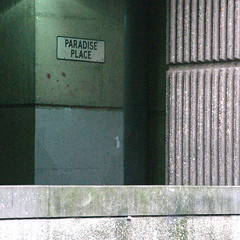![]()
![]()
![]()
Use LEFT and RIGHT arrow keys to navigate between flashcards;
Use UP and DOWN arrow keys to flip the card;
H to show hint;
A reads text to speech;
15 Cards in this Set
- Front
- Back

alliteration
|
Alliteration happens when words that begin with the same sound are placed close to one another. For example, “the silly snake silently slinked by” is a form of alliteration. Try saying that ten times fast.
|
|

rhyme scheme
|
the pattern of rhyming lines in a poem. (For example, aabbccdd or ababcdcd)
|
|

irony
|
Irony involves saying one thing while really meaning another, contradictory thing.
|
|

metaphor
|
A metaphor happens when one thing is described as being another thing. “You’re a toad!” is a metaphor—although not a very nice one. Metaphor is different from simile because it leaves out the words “like” or “as.” For example, a simile would be, “You’re like a toad.”
|
|
|
internal rhyme
|
the rhyme occurs inside a line, such as “Let’s BEAT the HEAT.”
|
|
|
imagery
|
Imagery is intense, descriptive language in a poem that helps to trigger our senses and our memories when we read it.
|
|
|
meter
|
the number of feet in a line of poetry.
|
|
|
simile
|
A figure of speech involving the comparison of one thing with another thing of a different kind, (e.g., as brave as a lion).
|
|
|
poetic stanza
|
One of the divisions of a poem, composed of two or more lines usually characterized by a common pattern of meter, rhyme, and number of lines.
|
|
|
slant rhyme
|
full rhyme or slant rhyme, sometimes called near rhyme or imperfect rhyme,[1] is consonance on the final letters of the words involved (e.g. ill with shell). Many slant rhymes are also mouth rhyme.
|
|
|
allusion
|
An expression designed to call something to mind without mentioning it explicitly; an indirect or passing reference.
|
|
|
sight rhyme
|
agreement in spelling, but not in sound, of the ends of words or of lines of verse, as in have, grave.
|
|
|
symbolism
|
The use of symbols to represent ideas or qualities
|
|
|
allegory
|
A story, poem, or picture that can be interpreted to reveal a hidden meaning, typically a moral or political one.
|
|
|
hyperbole
|
Exaggerated statements or claims not meant to be taken literally.
|

